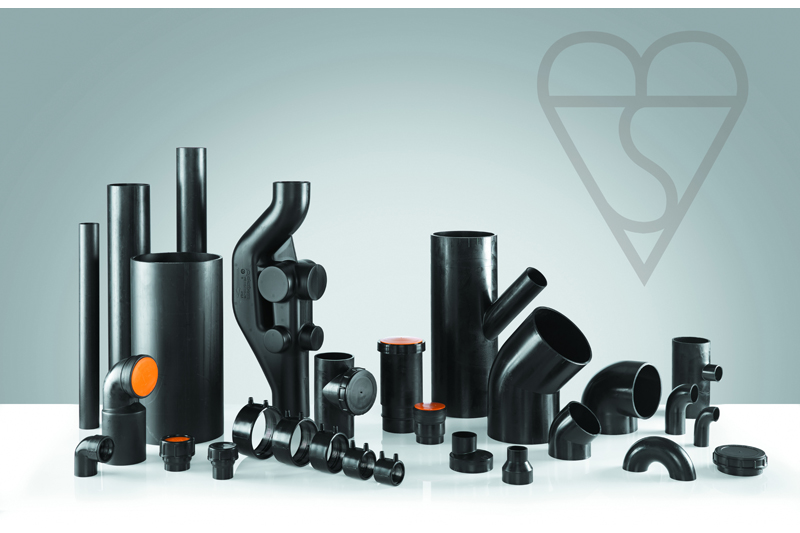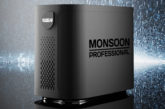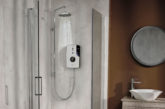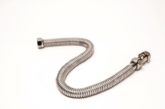
Fundamentally, an efficient drainage system design is about managing the mix of air and water and maintaining the water seal in the trap, to protect the building’s occupants from foul odours and the risk of bacterial contamination. David Barker, Soil & Waste Category Manager at Marley Plumbing & Drainage, discusses the importance of managing air pressure within a drainage system and explores the various solutions available to do so.
Soil and waste drainage systems within high-rise and commercial buildings are formed of a highly complex network of pipework. Considering the large number of toilets, sinks and other fittings, which all connect to the same system, it is vital that the individual water trap seals are maintained, as they are the only barrier between the habitable space and drainage system.
Pressure within a drainage system, regardless of its size, will constantly fluctuate, with a sudden flow of water inside a pipe – such as the flush of a toilet – creating positive pressure in front of the flow and negative behind. Whereas this is unlikely to cause an issue within a small domestic house, a high-rise building has the potential for a large number of plumbing fixtures to be used simultaneously, especially during peak hours. This would result in higher levels of waste water flowing through the system at any one time, in turn leading to a substantial increase in pressure instability, with both negative and positive pressures within the drainage system.
So, what are the effects of this pressure? While negative pressure can result in ‘fall back’ from the trap, leaving residents vulnerable to sewer gases and odours, positive pressure can lead to bubbles of foul air passing through the trap seal.
Therefore, it is clear that pressure within a high-rise drainage system needs to be carefully controlled and fortunately, there a variety of solutions available to assist in doing so.
All under control
Secondary Ventilation is included in traditional drainage design and incorporates the installation of a secondary ‘dry’ pipe alongside the main stack, which is conveyed upwards through to the roof. This secondary pipe links at each floor level, balancing pressures within the drainage system and helping to prevent the release of sewer gases into the building. The presence of a second stack undeniably takes up more space within a building, however.
For applications where space is limited, some manufacturers produce stack-aerators. Installed on each floor of the building, a stack-aerator replaces the existing T-branch fitting and connects the horizontal branches with the vertical stack, meaning that no extra space is required. Its curved shape works to reduce the speed of the falling waste water from the floors above, as well as smoothly merging the horizontal flow from the individual branches with the main stack. This all helps to control the mix of water and pressure within the system.
A more recent solution for controlling the air pressure within a soil and waste system is active drainage ventilation. As the name suggests, it actively works to control the pressure and provides relief direct at the Point of Need (PON) by removing or reducing an incoming positive or negative pressure.
For example, Marley Plumbing & Drainage offers the Studor P.A.P.A (Positive Air Pressure Attenuator), which has been developed to eliminate the harmful effects of positive pressure generated in gravity fed systems within multi-storey buildings. It can be easily installed either vertically or horizontally, allowing installers to use it according to the individual requirements and space available.
P.A.P.A or other active drainage ventilation products are used in conjunction with air admittance valves to provide a complete working system, capable of reducing pressure fluctuations and guaranteeing the trap seal retention. Designed for installation in a vertical position, air admittance valves work to combat the negative pressure within a drainage system. Once installed, the valve will remain closed unless the system is subject to negative pressure, whereby it will then open and allow air to be drawn in, stabilising the pressure levels.
Marley has both a Maxi-Vent and Mini-Vent available, depending on the building size, both of which can be used alongside the P.A.P.A to provide a complete ventilation system. It actively works to control and stabilise the pressure within soil and waste stacks, in turn maintaining the trap seals and protecting the building’s occupants from foul odours, sewer gases and bacterial contamination.
It is evident that correctly managing the mix of water and pressure within a drainage system is absolutely imperative, both for the efficient running of the system and also for the health and well-being of the building’s occupants. Fortunately, there are a variety of solutions available that have been specifically designed to assist in controlling and stabilising the internal pressure levels.













